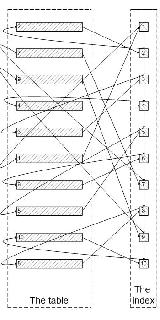Mybatis三種批量插入數據的方式
mapper.xml:
<?xml version='1.0' encoding='UTF-8'?><!DOCTYPE mapper PUBLIC '-//mybatis.org//DTD Mapper 3.0//EN' 'http://mybatis.org/dtd/mybatis-3-mapper.dtd'><mapper namespace='com.buhe.demo.mapper.StudentMapper'> <insert parameterType='Student'> INSERT INTO tb_student (name, age, phone, address, class_id) VALUES (#{name},#{age},#{phone},#{address},#{classId}) </insert></mapper>
mapper接口:
public interface StudentMapper { int insert(Student student);}
測試代碼:
@SpringBootTestclass DemoApplicationTests {@Resourceprivate StudentMapper studentMapper;@Testpublic void testInsert(){//數據生成List<Student> studentList = createData(100);//循環插入long start = System.currentTimeMillis();studentList.stream().forEach(student -> studentMapper.insert(student));System.out.println(System.currentTimeMillis() - start);}private List<Student> createData(int size){List<Student> studentList = new ArrayList<>();Student student;for(int i = 0; i < size; i++){student = new Student();student.setName('小王' + i);student.setAge(18);student.setClassId(1);student.setPhone('1585xxxx669');student.setAddress('未知');studentList.add(student);}return studentList;}}2. foreach標簽
mapper.xml:
<?xml version='1.0' encoding='UTF-8'?><!DOCTYPE mapper PUBLIC '-//mybatis.org//DTD Mapper 3.0//EN' 'http://mybatis.org/dtd/mybatis-3-mapper.dtd'><mapper namespace='com.buhe.demo.mapper.StudentMapper'> <insert parameterType='Student'> INSERT INTO tb_student (name, age, phone, address, class_id) VALUES (#{name},#{age},#{phone},#{address},#{classId}) </insert> <insert id='insertBatch'> INSERT INTO tb_student (name, age, phone, address, class_id) VALUES <foreach collection='list' separator=',' item='item'>(#{item.name},#{item.age},#{item.phone},#{item.address},#{item.classId}) </foreach> </insert></mapper>
mapper接口:
public interface StudentMapper { int insert(Student student); int insertBatch(List<Student> studentList);}
測試代碼:
@SpringBootTestclass DemoApplicationTests {@Resourceprivate StudentMapper studentMapper;@Testpublic void testInsertByForeachTag(){//數據生成List<Student> studentList = createData(100);//使用foreach標簽,拼接SQL插入long start = System.currentTimeMillis();studentMapper.insertBatch(studentList);System.out.println(System.currentTimeMillis() - start);}private List<Student> createData(int size){List<Student> studentList = new ArrayList<>();Student student;for(int i = 0; i < size; i++){student = new Student();student.setName('小王' + i);student.setAge(18);student.setClassId(1);student.setPhone('1585xxxx669');student.setAddress('未知');studentList.add(student);}return studentList;}}3. 批處理
測試代碼:
@SpringBootTestclass DemoApplicationTests {@Autowiredprivate SqlSessionFactory sqlSessionFactory;@Testpublic void testInsertBatch(){//數據生成List<Student> studentList = createData(100);//使用批處理long start = System.currentTimeMillis();SqlSession sqlSession = sqlSessionFactory.openSession(ExecutorType.BATCH,false);StudentMapper studentMapperNew = sqlSession.getMapper(StudentMapper.class);studentList.stream().forEach(student -> studentMapperNew.insert(student));sqlSession.commit();sqlSession.clearCache();System.out.println(System.currentTimeMillis() - start);}private List<Student> createData(int size){List<Student> studentList = new ArrayList<>();Student student;for(int i = 0; i < size; i++){student = new Student();student.setName('小王' + i);student.setAge(18);student.setClassId(1);student.setPhone('1585xxxx669');student.setAddress('未知');studentList.add(student);}return studentList;}}三種方式的對比
MySQL服務器版本:5.6.4
其他依賴版本如下:
<?xml version='1.0' encoding='UTF-8'?><project xmlns='http://maven.apache.org/POM/4.0.0' xmlns:xsi='http://www.w3.org/2001/XMLSchema-instance'xsi:schemaLocation='http://maven.apache.org/POM/4.0.0 https://maven.apache.org/xsd/maven-4.0.0.xsd'><modelVersion>4.0.0</modelVersion><parent><groupId>org.springframework.boot</groupId><artifactId>spring-boot-starter-parent</artifactId><version>2.4.4</version><relativePath/> <!-- lookup parent from repository --></parent><groupId>com.buhe</groupId><artifactId>demo</artifactId><version>0.0.1-SNAPSHOT</version><name>demo</name><description>Demo project for Spring Boot</description><properties><java.version>1.8</java.version></properties><dependencies><dependency><groupId>org.springframework.boot</groupId><artifactId>spring-boot-starter-web</artifactId></dependency><dependency><groupId>org.springframework.boot</groupId><artifactId>spring-boot-starter-test</artifactId><scope>test</scope></dependency><dependency><groupId>mysql</groupId><artifactId>mysql-connector-java</artifactId><version>5.1.41</version></dependency><dependency><groupId>org.mybatis.spring.boot</groupId><artifactId>mybatis-spring-boot-starter</artifactId><version>1.3.1</version></dependency></dependencies><build><plugins><plugin><groupId>org.springframework.boot</groupId><artifactId>spring-boot-maven-plugin</artifactId></plugin></plugins><resources><resource><directory>src/main/java</directory><includes><include>**/*.xml</include></includes></resource></resources></build></project>
三種插入方式在不同數據量下的表現,測試結果:
插入方式 10條 100條 500條 1000條 循環插入 496ms 3330ms 15584ms 33755ms foreach標簽 268ms 366ms 392ms 684ms 批處理 222ms 244ms 364ms 426ms
三種方式中,批處理的方式效率是最高的,尤其是在數據量大的情況下尤為明顯。
其次是foreach標簽,foreach標簽是通過拼接SQL語句的方式完成批量操作的。但是當拼接的SQL過多,導致SQL大小超過了MySQL服務器中max_allowed_packet變量的值時,會導致操作失敗,拋出PacketTooBigException異常。
最后是循環插入的方式,這種方式在數據量小的時候可以使用,在數據量大的情況下效率要低很多。
以上就是Mybatis的三種批量插入方式的詳細內容,更多關于Mybatis 批量插入的資料請關注好吧啦網其它相關文章!
相關文章:
1. 詳解MySQL的Seconds_Behind_Master2. 一次SQL查詢優化原理分析(900W+數據從17s到300ms)3. MySQL MyISAM 與InnoDB 的區別4. MySQL中建表時可空(NULL)和非空(NOT NULL)的用法詳解5. SQLite 實現if not exist 類似功能的操作6. Microsoft Office Access調整控件大小的方法7. Mysql入門系列:MYSQL表達式求值和MYSQL類型轉換8. MySql遠程連接的實現方法9. Mysql入門系列:建立MYSQL客戶機程序的一般過程10. MySQL插入數據時,如果記錄不存在則insert,如果存在則update

 網公網安備
網公網安備